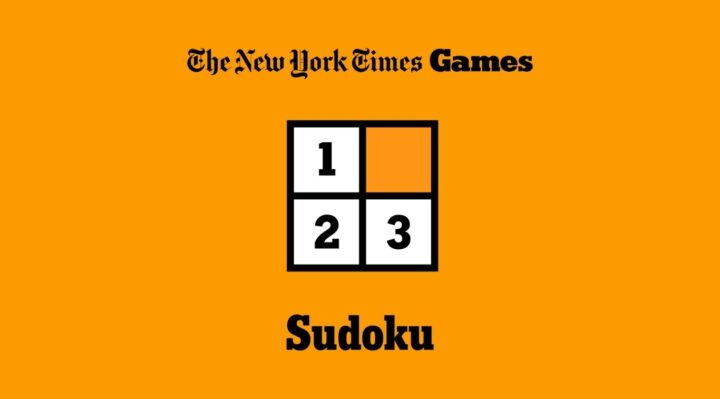Sudoku has become a staple of puzzle enthusiasts around the world, captivating millions with its blend of logic, strategy, and engagement. Among the many platforms available for Sudoku lovers, Sudoku The New York Times stands out as a premier destination. This article will explore the history, rules, strategies, and tips for mastering Sudoku, particularly through the lens of The New York Times’ offerings.
The History of Sudoku
Origins of Sudoku
The roots of Sudoku can be traced back to the late 18th century and are often linked to a puzzle called “Latin Squares,” developed by Swiss mathematician Leonhard Euler. However, the modern version of Sudoku as we know it today originated in Japan in the late 20th century and quickly gained popularity worldwide.
Sudoku’s Arrival in the United States
Sudoku made its first appearance in the United States in 1986, published in a newspaper called The Daily Sudoku. However, it wasn’t until the early 2000s, following a feature in The New York Times, that Sudoku exploded in popularity across America.
The New York Times Sudoku: A Closer Look
What Makes The New York Times Sudoku Unique?
Sudoku The New York Times offers a unique take on this classic puzzle. Its puzzles are known for their quality and variety, catering to both beginners and seasoned experts. The New York Times provides a daily puzzle that has become a cherished routine for many readers.
Types of Sudoku Puzzles Offered
The New York Times features several types of Sudoku puzzles:
- Daily Sudoku: A standard 9×9 grid puzzle published every day.
- Mini Sudoku: A smaller version of the classic puzzle, typically featuring a 4×4 or 6×6 grid.
- Variations: Occasionally, The New York Times introduces themed or variant puzzles that offer a fresh twist on the traditional format.
How to Play Sudoku
Basic Rules of Sudoku
The rules of Sudoku are simple yet challenging:
- Grid Structure: The puzzle consists of a 9×9 grid divided into nine 3×3 subgrids.
- Objective: Fill the grid with numbers from 1 to 9 such that each number appears exactly once in each row, column, and 3×3 subgrid.
- Given Clues: Some numbers will be pre-filled in the grid, serving as clues to help you solve the puzzle.
Strategies for Solving Sudoku

Start with the Obvious
Begin by filling in the numbers that are easiest to deduce based on the given clues. Look for rows, columns, or subgrids that have many numbers already filled in.
Use Pencil Marks
When unsure of a number, use pencil marks to note potential candidates for each empty cell. This technique helps keep track of possibilities without committing to a number prematurely.
Elimination Technique
Use the process of elimination to narrow down options. If a number can only fit in one place within a row, column, or subgrid, place it there.
Look for Hidden Singles
Sometimes, a number may only have one possible place in a row, column, or subgrid even if other candidates are present. Identifying these hidden singles can help you solve the puzzle more efficiently.
The Benefits of Playing Sudoku
Cognitive Development
Playing Sudoku provides numerous cognitive benefits, including improved problem-solving skills, enhanced concentration, and better logical thinking. Regularly engaging with puzzles can sharpen your mind and keep your cognitive abilities in top shape.
Stress Relief
Sudoku can serve as a form of meditation for many people. Focusing on the numbers and the puzzle can help distract from daily stressors, providing a mental escape.
Social Interaction
Sudoku can also be a social activity. Many people enjoy sharing their puzzles and strategies with friends or family, fostering a sense of community among puzzle enthusiasts.
Tips for Mastering Sudoku The New York Times
Daily Practice
To improve your skills, make it a habit to solve the daily Sudoku puzzle in The New York Times. Consistent practice will enhance your problem-solving abilities and increase your familiarity with different puzzle styles.
Analyze Your Mistakes
After completing a puzzle, review any mistakes you made. Understanding where you went wrong can help you avoid similar errors in the future and improve your overall strategy.
Join a Community
Consider joining online forums or social media groups dedicated to Sudoku. Engaging with other enthusiasts can provide valuable insights, tips, and motivation to keep solving puzzles.
The Evolution of Sudoku in The New York Times
Digital Transformation
With the rise of digital media, The New York Times has adapted its Sudoku offerings to include a user-friendly online platform. This allows players to solve puzzles on their computers or mobile devices, making it more accessible than ever.
Interactive Features
The digital version of Sudoku The New York Times includes interactive features such as:
- Hints: Players can receive hints if they get stuck.
- Timer: Track your solving time to challenge yourself and improve your speed.
- Customization: Players can customize their experience by adjusting the difficulty level.
Popular Sudoku Variants
Killer Sudoku
Killer Sudoku combines elements of Sudoku and arithmetic. The grid is divided into cages, each with a sum that the numbers within must equal. This adds an extra layer of complexity to the traditional puzzle.
Samurai Sudoku
Samurai Sudoku consists of five overlapping Sudoku grids. Solving these puzzles requires a higher level of strategy and attention to detail, making them popular among seasoned players.
Hyper Sudoku
In Hyper Sudoku, players must also adhere to additional regions, making the puzzle more challenging. Each number must appear once in each row, column, 3×3 grid, and the extra outlined regions.
The Future of Sudoku
Continued Popularity
As more people discover the joys of Sudoku, its popularity is expected to continue growing. The New York Times will likely remain at the forefront of this trend, providing high-quality puzzles to its readers.
Integration of Technology
The integration of technology into Sudoku—through mobile apps and online platforms—will enhance accessibility and engagement, attracting a new generation of players.
Conclusion
Sudoku The New York Times is not just a puzzle; it’s a daily ritual for many, offering mental challenges and entertainment. With its rich history, engaging gameplay, and various types of puzzles, Sudoku continues to captivate audiences around the world.
Whether you’re a beginner or a seasoned pro, there’s always something new to learn and enjoy in the world of Sudoku. So grab your pencil or open your device, and dive into the delightful challenge that is Sudoku!



